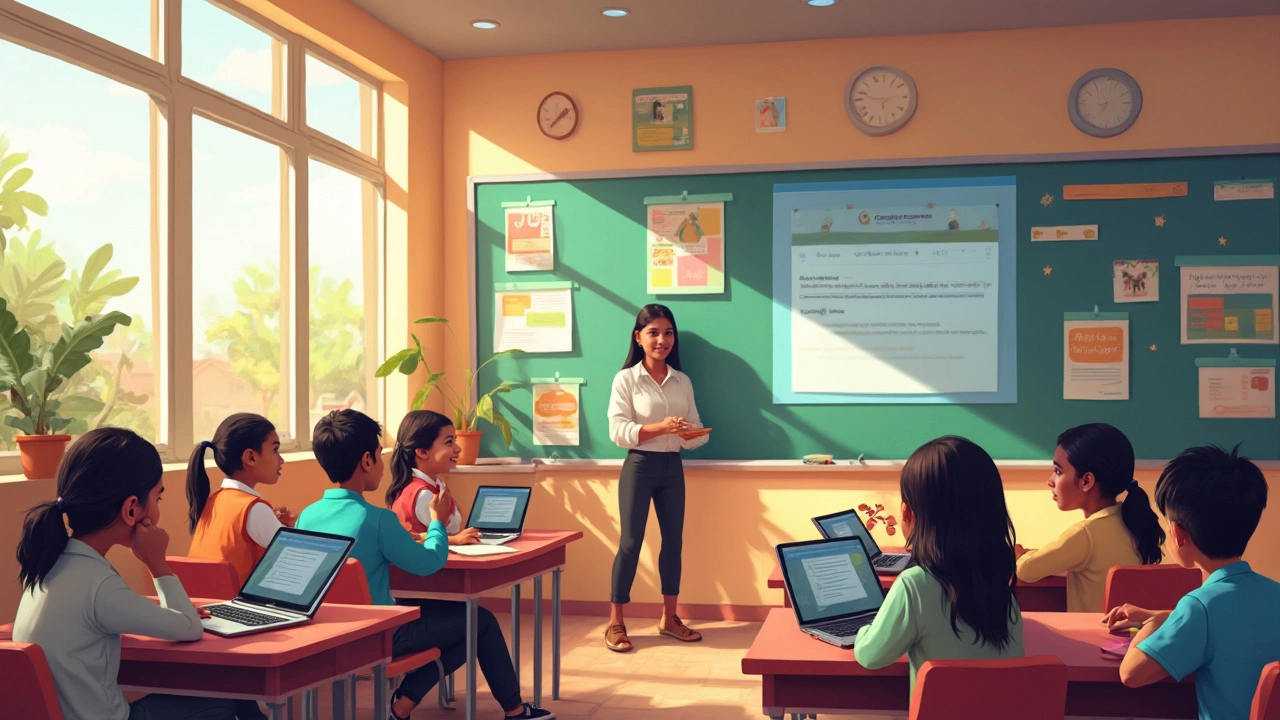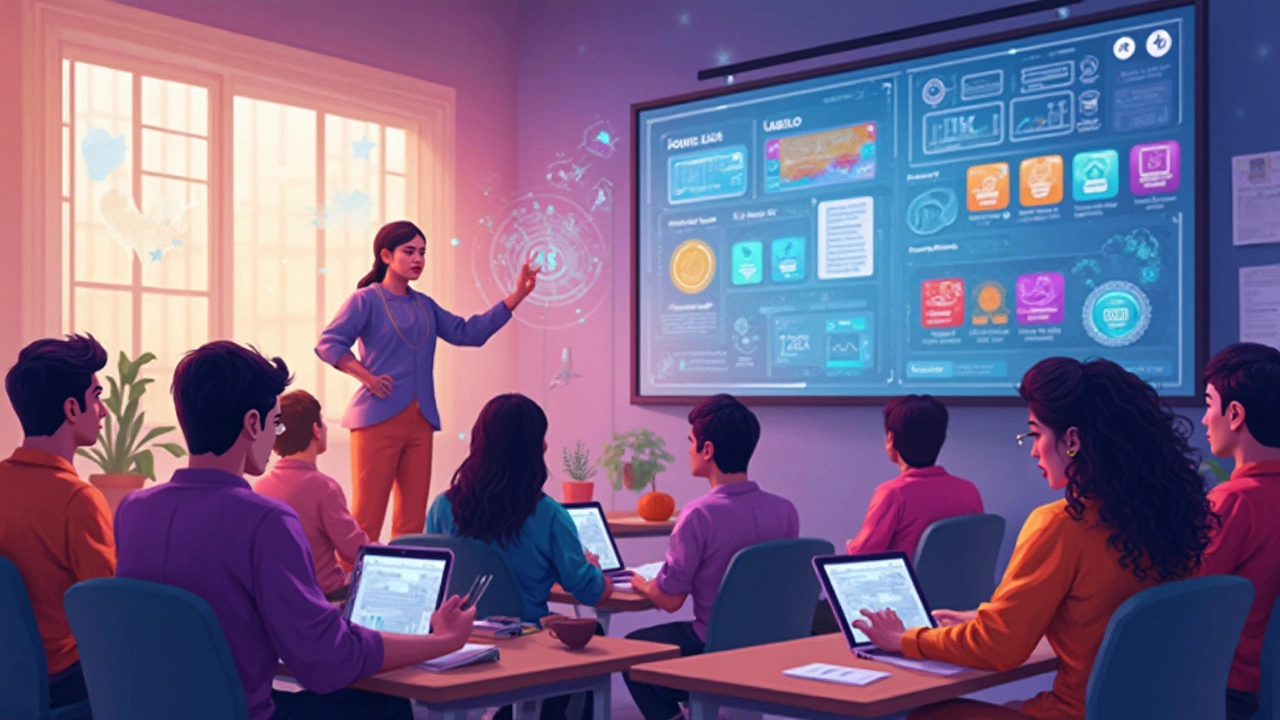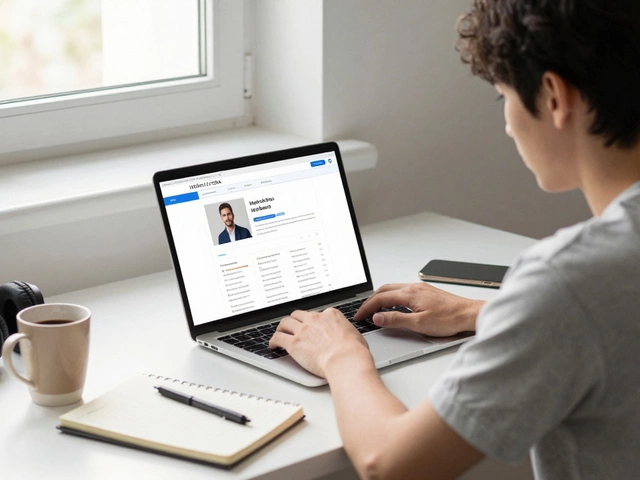eLearning: What It Is and How It’s Changing How Students Learn in India
When you hear eLearning, a structured way to learn using digital platforms like videos, quizzes, and live sessions instead of traditional classrooms. Also known as online learning, it’s not just watching videos—it’s a system built to keep you engaged, track your progress, and adapt to how you learn best. In India, where millions prepare for JEE, NEET, and UPSC, eLearning has become the quiet revolution behind the scenes. You don’t need to sit in a packed coaching center anymore. With a phone, an internet connection, and a daily habit, you can build real skills at your own pace.
What makes eLearning work isn’t the tech—it’s the design. Top platforms combine short lessons with instant feedback, spaced repetition, and interactive quizzes that feel more like games than homework. This isn’t theory. It’s what millions of students use daily, like Duolingo for languages or apps built for JEE and NEET prep. Digital learning, a broader term that includes any education delivered through digital tools, from PDFs to AI tutors. Also known as virtual classrooms, it’s the backbone of modern study routines. And it’s not just for kids. Professionals use it to earn certifications in cloud computing or cybersecurity that actually raise their salaries. The line between school, coaching, and career training is disappearing—and eLearning is why.
Some still think online learning means watching long lectures alone. That’s outdated. Today’s best platforms let you ask questions, join study groups, and get real-time help from tutors. They track what you get right and what you keep missing, then adjust your path. This is personalization, not automation. And it’s why students who use eLearning consistently outperform those who just memorize from books. Whether you’re learning English through conversation, coding on your phone, or preparing for a government job, the tools are here. You just need to know how to use them.
Below, you’ll find real guides from students and teachers who’ve tried it all—offline coaching, hybrid models, free apps, paid platforms. No fluff. No hype. Just what works, what doesn’t, and why. Whether you’re starting out or stuck in a rut, there’s something here that fits your situation. Let’s cut through the noise and find what actually moves the needle.

Do People Get Hired with Google Certificate? Real Results from Online Learning
Ever wondered if Google certificates really help you land a job? This article peels back the curtain with real stats, employer insights, and tips for making your certificate count. Find out which industries are paying attention, where these certificates stand against college degrees, and how to polish your resume for maximum impact. Plus, get practical steps for standing out during the job hunt. If you’re thinking about investing time into a Google certificate, this is the info you need before you start.

Google Education Platform: What You Should Know
Want to know if Google’s education platform is worth your attention? This article breaks down what it actually does, how it’s used in real classrooms, and why teachers and students keep coming back. You’ll get a clear look at its strongest tools, some smart ways to use them, and a few surprising things you probably didn’t know about Google’s take on e-learning. Ready to see if it can make your school or study life easier? Dig in for quick tips and honest details.

Distance Education: What Distance Really Means
This article breaks down what 'distance' means in the context of education. It explains how distance learning works, the common tools used, and the practical impacts on students and teachers. You'll learn surprising facts about remote study and tips for making the most of virtual classes. The article is simple, clear, and packed with advice you can actually use.

Is Getting a Google Certificate Worth It? Real Pros, Cons, and Surprises
Thinking about adding a Google certificate to your resume? This article breaks down whether those popular Google courses actually make a difference. Learn about how employers view them, what you get for your money, and what these certificates really cover. Get tips on making the most of online learning and how to spot the right fit for your goals. Perfect for anyone considering a change or hoping to upskill fast without a college degree.

Google Training Platform: What You Need to Know
Wondering if Google has its own training platform? This article digs into Google’s e-learning options, from full-on courses to bite-sized self-improvement tools. You'll get a walkthrough of Google's most useful training spaces, what makes them different, and straight-up tips on how to get started. It's packed with facts, easy comparisons, and key features people usually miss. If you want to boost your skills online, Google’s got more going on than you probably think.

Distance Education: What It Really Means and Why It Matters
Distance education means learning happens when students and teachers aren’t in the same place. This article breaks down what distance education is, its basics, and how it’s changing how we learn. You’ll get examples, some important benefits, and practical tips for making the most of online learning from home. Whether you’re already enrolled or just thinking about it, this guide helps you see how distance education actually works. Discover concrete facts and tried-and-true ideas to help you succeed while learning from anywhere.

LMS vs SCORM: What’s the Real Difference in E-Learning Platforms?
Ever wondered what separates an LMS from SCORM? This article clears up the confusion by breaking down how each one fits into the e-learning puzzle. Get real-world examples and practical advice on choosing and using these tools for online training. Avoid common mistakes, spot the red flags, and discover how to make your digital courses work smarter, not harder. If you work in training or online education, this is for you.

Top Paying Learning Platforms: Maximize Your Earnings Today
Diving into the world of online education, discovering which platform pays the most can steer you toward greater earnings. This article explores various e-learning options, weighs factors like popularity and teaching flexibility, and gives practical tips for maximizing income on these platforms. By evaluating payment models and user experiences, you can choose the right platform that aligns with your financial goals. Gain insights into top contenders and how you can optimize your teaching strategies for better pay.

Free College Courses: Maximizing Your Learning Without the Cost
In the digital age, accessing education without financial barriers is increasingly possible through free online college courses. These offerings allow individuals to expand their knowledge and skills without incurring debt. However, the value of these courses depends on several factors including subject matter, accreditation, and personal learning goals. By navigating the options available and understanding their limitations, learners can make informed decisions about pursuing free educational resources.

